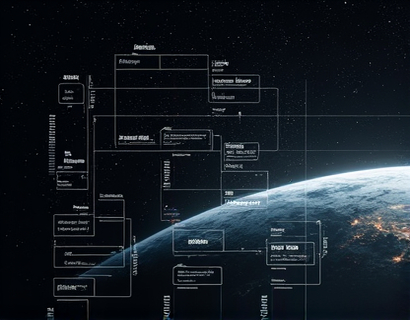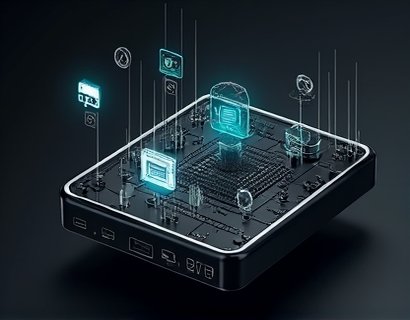Unlocking Digital Growth: Harnessing AI and Crypto for Enhanced Engagement and Business Success
The intersection of artificial intelligence (AI) and cryptocurrency represents a transformative frontier in the digital landscape. As businesses and tech enthusiasts seek to maximize digital engagement and drive growth, integrating these two powerful technologies offers a strategic advantage. This article delves into the ways AI and blockchain can be leveraged to enhance online presence, foster deeper user interactions, and propel business success in the rapidly evolving tech and crypto environment.
To begin with, understanding the fundamental roles of AI and cryptocurrency is crucial. AI, with its ability to process vast amounts of data, learn from patterns, and make predictions, has revolutionized various industries. From personalized recommendations in e-commerce to predictive analytics in finance, AI's impact is profound. On the other hand, cryptocurrency, particularly blockchain technology, has introduced a new paradigm of decentralized, secure, and transparent transactions. The synergy between these technologies can unlock unprecedented opportunities for businesses aiming to thrive in the digital age.
Enhancing Online Presence through AI and Blockchain
One of the primary ways AI and blockchain can enhance online presence is through the creation of secure and transparent user data management systems. Traditional data handling methods often raise concerns about privacy and security. By utilizing blockchain, businesses can create immutable and transparent records of user interactions and data, ensuring that user privacy is maintained while providing valuable insights through AI-driven analytics. This dual approach not only builds trust with users but also complies with stringent data protection regulations such as GDPR.
Moreover, AI can optimize content delivery and user experience on websites and applications. Machine learning algorithms can analyze user behavior to personalize content, recommend products, and improve navigation. When combined with blockchain, these personalized experiences can be secured and verified, ensuring that users have control over their data and preferences. This not only enhances user engagement but also fosters a loyal community of users who value their digital sovereignty.
Driving Engagement with AI-Powered Chatbots and Virtual Assistants
AI-powered chatbots and virtual assistants are becoming indispensable tools for businesses looking to enhance customer engagement. These AI-driven entities can provide 24/7 support, answer queries, and guide users through complex processes with precision and efficiency. When integrated with blockchain, these chatbots can operate on a decentralized network, ensuring that user interactions are secure and transparent. This integration not only improves customer service but also builds a reputation for the brand as a technology leader committed to innovation and user trust.
Furthermore, AI can analyze chat logs and user interactions to identify patterns and insights, which can be used to refine and improve the chatbot's performance over time. Blockchain can store these interaction records in a tamper-proof manner, allowing businesses to maintain a comprehensive and verifiable history of customer interactions. This data can be invaluable for continuous improvement and for demonstrating transparency to users.
Fostering Community and Decentralized Governance
The decentralized nature of blockchain technology offers unique opportunities for fostering community and governance. By leveraging smart contracts, businesses can create decentralized autonomous organizations (DAOs) where community members have a say in decision-making processes. AI can enhance this by analyzing community sentiment, predicting trends, and suggesting actions that align with the collective interests of the community. This synergy between AI and blockchain can lead to more democratic and inclusive business models, where users feel empowered and valued.
For instance, a DAO can use AI to analyze user feedback and proposals, automating the process of voting and decision-making. Blockchain ensures that all transactions and votes are recorded transparently and immutably, reducing the risk of fraud and increasing trust within the community. This approach not only enhances engagement but also builds a strong, loyal community that is invested in the success of the project.
Monetization Strategies in the Crypto-AI Ecosystem
Monetizing digital growth through AI and blockchain requires innovative strategies that align with the unique characteristics of these technologies. One effective approach is the creation of tokenized economies within platforms. Tokens can serve as a medium of exchange, reward for contributions, or representation of utility within the ecosystem. AI can optimize the distribution and valuation of these tokens based on user activity, engagement, and other relevant metrics, ensuring a fair and dynamic economic system.
Another strategy is the use of AI-driven advertising and sponsorships. By analyzing user data and preferences, AI can match advertisers with the most relevant audiences, increasing the effectiveness of ad campaigns. Blockchain ensures that transactions are transparent and secure, with smart contracts automating payment processes and ensuring that creators and content owners are fairly compensated. This not only enhances the monetization potential but also builds a trustworthy and efficient ecosystem.
Challenges and Considerations
While the integration of AI and blockchain offers numerous benefits, it also comes with its own set of challenges. One of the primary concerns is the technical complexity involved in implementing these technologies. Businesses need to invest in skilled personnel or partner with experts who can navigate the intricacies of AI and blockchain development. Additionally, the regulatory landscape for cryptocurrency and AI is still evolving, and compliance remains a critical consideration.
Another challenge is the issue of scalability. Blockchain networks, particularly public ones, can face limitations in transaction throughput and processing speed. AI systems, especially those requiring extensive data processing, can also be resource-intensive. To overcome these challenges, businesses can explore private or consortium blockchains that offer better scalability and performance while maintaining the benefits of decentralization and security.
Case Studies and Real-World Applications
Several companies have successfully harnessed the power of AI and blockchain to drive digital growth. For example, a decentralized social media platform used AI to curate content based on user preferences while ensuring data privacy through blockchain. This approach not only enhanced user engagement but also attracted a significant user base concerned about privacy. Another instance is a supply chain management system that utilized blockchain for transparent tracking and AI for predictive maintenance, reducing costs and improving efficiency.
These case studies demonstrate the practical applications and benefits of integrating AI and blockchain. They serve as valuable references for businesses looking to implement similar strategies and highlight the potential for innovation and growth in the crypto-AI space.
Future Trends and Opportunities
Looking ahead, the convergence of AI and blockchain is poised to bring about even more transformative changes. The development of interoperable blockchain networks will enable seamless integration with AI systems, creating more robust and versatile platforms. Advancements in quantum computing may also impact the security and efficiency of blockchain, further enhancing its appeal for AI applications.
Moreover, the rise of edge computing, which brings data processing closer to the source, can complement AI and blockchain by reducing latency and improving real-time decision-making. This triad of technologies—AI, blockchain, and edge computing—holds the potential to revolutionize industries such as healthcare, finance, and logistics, opening up new avenues for growth and innovation.
In conclusion, the integration of AI and blockchain represents a powerful strategy for businesses and tech enthusiasts aiming to unlock digital growth. By enhancing online presence, driving engagement, and fostering community governance, these technologies offer a comprehensive solution for thriving in the evolving digital landscape. Embracing this synergy can lead to unprecedented opportunities for success and innovation.










































